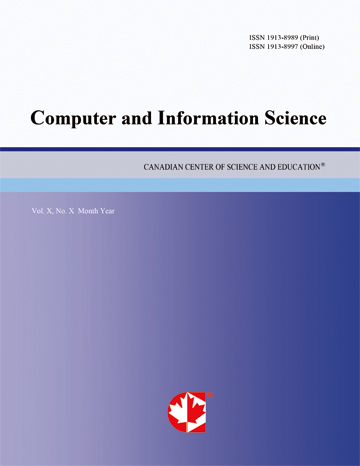A Novel Implementation of G-Fuzzy Logic Controller Algorithm on Mobile Robot Motion Planning Problem
- Seyyed Mohammad Reza Farshchi
- Seyyede Aliye NezhadHoseini
- Fateme Mohammadi
Abstract
This paper presents a new algorithm for global path planning to a goal for a mobile robot using GA and fuzzy Algorithms. A genetic algorithm is used to find the optimal path for a mobile robot to move in a dynamic environment expressed by a map with nodes and links. Locations of target and obstacles to find an optimal path are given in an environment that is a 2-D workplace. Each via point (landmark) in the net is a gene which is represented using binary code. The number of genes in one chromosome is function of the number of obstacles in the map. Therefore, we used a fixed length chromosome. The generated robot path is optimal in the sense of the shortest distance. The fitness function of genetic algorithm takes full consideration of three factors: the collision avoidance path, the shortest distance and smoothness of the path. The specific genetic operators are also selected to make the genetic algorithm more effective. The simulation results verify that the genetic algorithm is high effective under various complex dynamic alien environments.
- Full Text:
 PDF
PDF
- DOI:10.5539/cis.v4n2p102
Journal Metrics
WJCI (2022): 0.636
Impact Factor 2022 (by WJCI): 0.419
h-index (January 2024): 43
i10-index (January 2024): 193
h5-index (January 2024): N/A
h5-median(January 2024): N/A
( The data was calculated based on Google Scholar Citations. Click Here to Learn More. )
Index
- BASE (Bielefeld Academic Search Engine)
- CNKI Scholar
- CrossRef
- DBLP (2008-2019)
- EuroPub Database
- Excellence in Research for Australia (ERA)
- Genamics JournalSeek
- GETIT@YALE (Yale University Library)
- Google Scholar
- Harvard Library
- Infotrieve
- Mendeley
- Open policy finder
- ResearchGate
- Scilit
- The Keepers Registry
- UCR Library
- WJCI Report
- WorldCat
Contact
- Chris LeeEditorial Assistant
- cis@ccsenet.org
